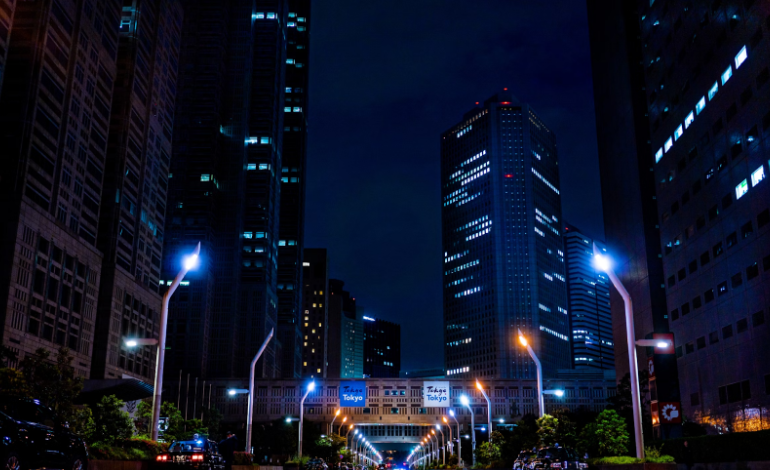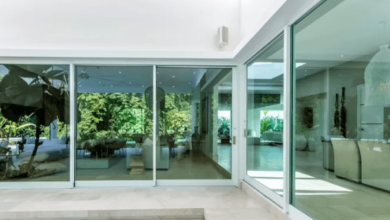Why Are There Purple Street Lights Popping Up in Cities?

In today’s world business owners, facility managers, and urban developers have observed purple street lights being placed alongside roads. This could initially seem as a new design innovation but it is more technical as far as outdoor LED lighting is concerned. It is fundamentally an issue B2B decision makers cannot afford to overlook.
But for municipalities, contractors and commercial planners, paying attention to these changes can make all the difference when it comes to managing lighting infrastructure and minimizing disruptions while maintaining brand trust. In this article, we explain the reasons purple street lights exist, their implications for outdoor LED lighting, and the greater purpose of this phenomenon.
What’s Causing Purple Street Lights?
Despite their unique appeal, purple street lights are often not the product of people’s creativity. More often than not, these purple hues are the consequence of a malfunction in LED lighting systems, specifically the degradation of the phosphor coating designed to turn blue LED light into white. When this coating starts wearing off, it exposes the underlying blue-violet component resulting in a purple sensation.
This problem often comes about due to poor quality manufacturing and a lackluster approach towards quality control. For cities or organizations that have had thousands of these fixtures installed, the emergence of purple lights can be a worrying prospect in terms of product failure and damage to reputation in a global sence.
Involves B2B stakeholders in lighting infrastructure like developers, city planners and industrial project managers find this more than curious. It’s a wake up call to re-examine the supplier due diligence processes with respect to warranties, quality assurance documents, and maintenance plans.
See also: Gearing Up for Lifeguard Duty: Preparing for the End of Winter
How Purple Street Lights Influence Urban Development
The last explains why from the B2B angle urban purple street lights are an aesthetic feature. They reflect underlying risks in implementing outdoor LED lighting projects and provide a reminder of the need for robustness and compliance.
Towns and cities allocate millions for street lighting systems to enhance safety, visibility, and energy consumption. Even a single malfunctioning light can have a negative impact on an entire district and increase maintenance budgets while lowering public confidence.
Not to mention, the purple lights can greatly confuse drivers and pedestrians alike, making roads more dangerous. The wrong colour temperature for industrial parks and logistics centres can also alter the effectiveness of security systems or can cause visual discomfort for users and guests.
Getting Around the Purple Light Problem
How can purple urban development and business operations be improved for sustainability? The answer includes better quality control, procurement, and collaboration with specialists in lighting design.
Some of these tips may be too practical or hard to understand, so here is a basic explanation:
- Make sure of authenticity: Establish that the lights are CE, UL, RoHS or equivalent certified.
- Assess phosphor’s toughness: Know what material goes into the LED, especially in regard to color durability.
- Choose verified claims: For example, claim of 50,000 hours serviceable life with minimal lumen depreciation should be readily available.
- Do Proof of Concept (POC): Before large-scale installation, deploy a limited quantity of LED lights and observe their performance in real life.
- Engage with experts: Collaborate with suppliers that offer value added services such, but not limited to, customization, active support, and post-installation review.
These strategies should help you protect your budget and ensure the expected results in performance and appearance are achieved for your outdoor LED lighting projects.
The Effects on Economics for Enterprises and Municipalities
At first glance, the cost of the purple lights may not seem impactful, as the odd fixtures do not seem that expensive. However, B2B operations such as these can cost upwards of hundreds or even thousands which magnifies this issue rapidly.
- Maintenance costs: Fixing broken fixtures, especially those mounted on height or installed in busy places, comes at a cost of labor, equipment, and scheduling.
- Downtime risks: Broken lights present safety problems and restrict access to streets, parking lots, or industrial areas which can become costly.
- Brand impact: Developers and property managers risk having poor perceptions of them due to poorly maintained spaces which can greatly damage your brand reputation.
These costs define why outdoor LED lighting does not come cheap. Businesses can no longer afford to purchase products on price alone. A lower upfront cost may turn into a larger long-term expense if the product is unreliable.
The Bigger Picture: Lighting as Infrastructure
Bulbs are no longer utilitarian; they serve integrated smart infrastructure functions. Modern B2B shoppers seek lighting that can connect to IoT devices, responds to environmental changes, and assists with ESG (Environmental, Social, and Governance) objectives.
Although the emergence of purple street lights may look like a bizarre occurrence, it highlights the fundamental need for better thinking concerning the design and deployment of intelligent lighting systems. The transformation toward smart, resilient infrastructure is already happening for both municipalities and private enterprises.
Focusing on the quality, performance, and flexibility of lighting systems enables B2B stakeholders to make sure that visibility and long-term success are both incorporated in operational activities.
Conclusion: A Lesson in Quality and Strategy.
Next time someone questions, “why purple street lights suddenly appearing in cities?,” the answer revolves beyond just the color. It is a tale of the control, supply chain decisions, and the significance of lights in the design of urban areas.
Purple lights can be used as an example for anyone in charge of massive outdoor LED lighting projects to remember that there is more to vendor promises than just product claims: durability of the phosphor coating could spell the difference between a hassle-free implementation and a maintenance nightmare.
The changing features of the lighting industry offers a whole new set of challenges and opportunities. As B2B decision-makers, there is now the chance to raise the bar: set more stringent issuance criteria and guarantee that their projects will be implemented for all the best reasons.




